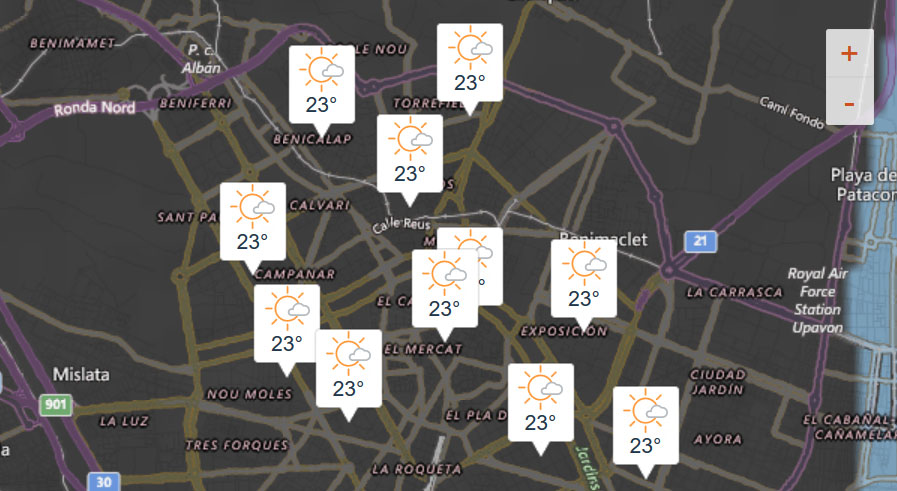Valencia has a generally mild climate, heavily influenced by the neighbouring Mediterranean sea.
Still, there are important differences between areas:
Proper Mediterranean climate (Köppen Csa). It roughly goes along the coastal plain from the northernmost border through the Benidorm area (cities included here are, amongst others, Castellón de la Plana, Gandia and Valencia). It covers in various grades the lower inland areas. In this area, winters are cool, summers are long, dry and hot; rainfall occurs mostly during spring and autumn, usually totalling around 600 mm. with a remarkably wetter micro climate in the Marina Alta and the Safor comarques just north of Cap de la Nau cape, which accumulates an average of up to 1000 mm. due to an orographic lift phenomenon.
Mediterranean to continental Mediterranean climate (Köppen Csa) and highland climate (Köppen H). These are the innermost lands and those at a higher elevation (cities included here are, amongst others, Alcoy, Morella, Requena and Villena). Here winters are cool to cold, especially at night (a few days of snow are not unusual), summers mild to hot and rainfall more evenly distributed through the year. The lower registered temperatures in the Valencian Community were in these inland areas during the cold wave of 1956. Temperatures plunged to nearly −20 °C; as in Vistabella del Maestrat (−19 °C) and Castellfort (–17 °C)
Semi-arid climate (Köppen BSh) to arid climate (Köppen BWh), although in zones at the interior the average temperatures are slightly lower, being from BSk to BWk in the Köppen climate classification. It roughly goes along the coastal plain from Villajoyosa through the southernmost border of the territory (cities included here are, amongst others, Alicante, Elche, Orihuela and Torrevieja). Summers are very long, hot to very hot and very dry, winters are cool to mild and its most prominent feature is a very scarce precipitation, typically below 300 mm. per year which is most likely to happen during spring and autumn. The reason for this lack of precipitation is the marked rain shadow effect caused by hills to the west of the Alicante province (and, to a lesser degree, those in the northern part of the province which, in turn, enhance the inverse orographic lift effect around Cap de la Nau).
ANNUAL TEMPERATURES

ANNUAL PRECIPITATIONS

CURRENT WEATHER



 SPAIN
SPAIN 



